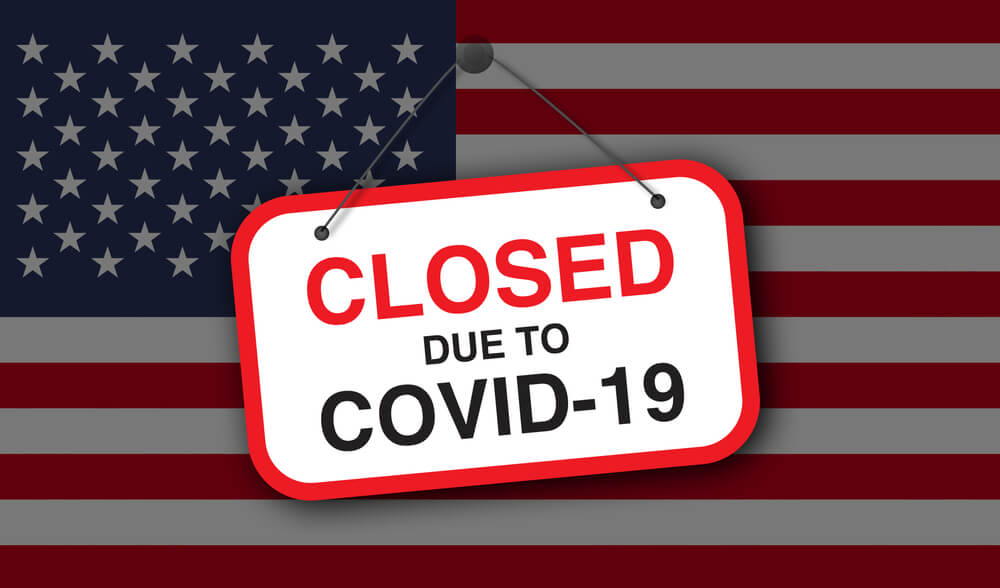Never before has so much of life been put on pause.
Even family and friends — who know perfectly well that neither party is sick — are told to keep their distance. Hands are not shook. Sales are not made. Marriages are postponed. Money is not earned.
And never before has so much money been created, out of thin air, to try to make up for the money that is not earned.
Is money you don’t earn as good as money you do? We’re going to find out.
But in order to understand what is really going on, you have to deconstruct the news into its component parts. And for that, we’re going to resort to numbers.
We don’t like numbers here at the Diary. We don’t trust them.
But we’ll try a few of them anyway. Maybe they’ll help us understand what is going on.
Apocalypse to Armageddon
Remember, there are four main characters in this drama.
- A virus
- The government’s reaction to the virus
- The economy… and its reaction to the government’s reaction
- The government’s reaction to the economy’s reaction to the government’s reaction to the virus
As for the virus, it appears to be much less of a big deal than it is made out to be.
Dr. Fauci — the hero in the feds’ anti-virus war — has reduced his estimate of the damage it will do from “Apocalypse” to “Armageddon.” Instead of 200,000 fatalities, he now expects only 60,000.
Approximately 7,500 people die every day in the U.S… on an ordinary day. That’s 2,700,000 per year. Sixty thousand is only a 2% increase. Neither Apocalypse nor Armageddon.
But wait. Almost all of the deaths are old people… many of them with “pre-existing conditions.”
The authorities don’t want to undercount… so anyone who tests positive for the virus and dies — even, we suspect, if he is shot through the head by the police — is put down as a coronavirus death.
So, the real increase in deaths — caused by the virus alone — may be only 1%. And most of those may be premature, but not by much.
But wait again. How many deaths does the shutdown really save?
Suppose the U.S. followed the path of Sweden, for example… and simply let vulnerable people take sensible precautions of their own. Perhaps the difference would only be half of a percent.
Nevertheless, governments all over the planet have gone to war, putting in place measures to stop getting and spending… giving and taking… and doing for your neighbor what you would have him do for you.
In a normal economy, people work with one another… and create wealth. They trade with each other, too, benefiting from each other’s skills and advantages.
Trade means contact… and contact transfers not just goods and services, but viruses and bacteria, too.
Which brings us to the major plot development: the economy’s reaction…
Ripple Effect
Whole industries are being wiped out.
The U.S. and Canadian oil industry, for example, has been decimated. Its bonds are going to zero. Most likely, the oil drillers will never recover.
They need high oil prices and low, low borrowing rates. Neither of those things are likely to happen again anytime soon. Oil is cheap. And who would lend to a U.S. oil producer now?
Airlines have lost market share to Zoom meetings… malls have lost business to online sellers. Bookstores… hotels… convention centers… live sports and entertainment…
And how about two federal monopolies — the Post Office and railroad company Amtrak?
How many of these things will really recover? Or even survive?
Industries are always evolving… with some falling and some rising. The feds’ war with the virus seems to have sped things up.
And the damage doesn’t stay in the most exposed industries. These businesses have employees… and creditors… and suppliers. The hurt ripples out, like the waves in a lake when you toss in an empty wine bottle.
And all of these businesses and employees pay taxes. April is usually the biggest month of the year for the feds’ tax receipts. This month, though, the pickings will be slim.
And here are some more numbers…
Apocalypse Now
Last year’s real GDP took about 365 days of getting and spending to achieve. It grew only 2%.
So, take out a week and you erase all of the growth. Shut down the economy for two weeks… and you’re in recession.
Closing the shutters for a month is equivalent to an 8% fall in GDP. Two months… and you’re in a depression.
Or look at it this way. Last year, 150 million workers spent all year producing a GDP of $20 trillion. But this year, already, 17 million people have filed for unemployment benefits.
That’s 11% of the workforce. Most likely another 15 million or so will join them. Unless these people were all slackers, that suggests a reduction of output of 21%. Again, that’s a depression.
That would be bad enough. The feds could simply claim victory in their battle with the virus… ease off on their restrictions… and let the economy get back to work.
Yes, there would be hardship aplenty. Bankruptcies. Defaults. High unemployment. Crashes… with assets going for pennies on the dollar.
These economic losses are real. They don’t disappear simply because the feds print pieces of paper with green ink on them.
They can only be made to go away by hard work, investment, skill, risk… and all the other elements of win-win prosperity.
But here, the plot thickens further… the protagonists — the feds — reveal their fatal flaw…
Stay tuned…
Regards,
Bill
• This article was originally published by Bonner & Partners. You can learn more about Bill and Bill Bonner’s Diary right here.




